Diseases and pests of Chinese cabbage
When growing Chinese cabbage, difficulties often arise: the vegetable is attacked by crawling and flying insect pests, which provoke dangerous cabbage diseases. Slugs, caterpillars, flea beetles, and aphids damage the foliage and stems of the plant, causing the development of many diseases that are not easy to get rid of.
Diseases of Chinese cabbage and their control
Due to the short growing season and due to the consumption of fresh vegetables, struggle with diseases hard. Knowing their characteristics, it is important to prevent the spread of infection on crops, have time to stop the infection at the initial stage, or take preventive measures.
Mucous bacteriosis, or wet rot
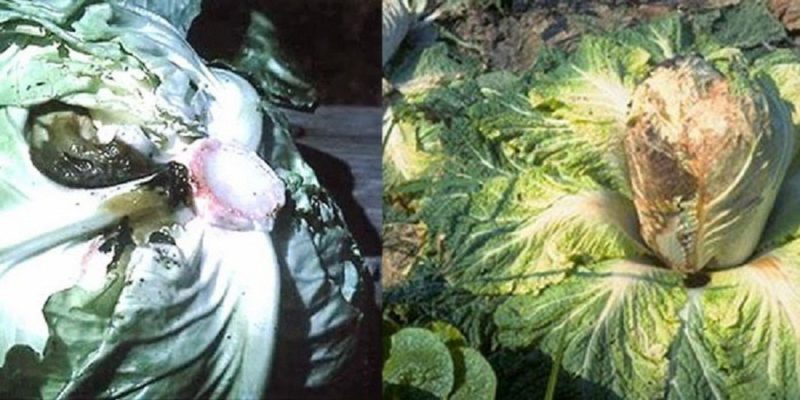
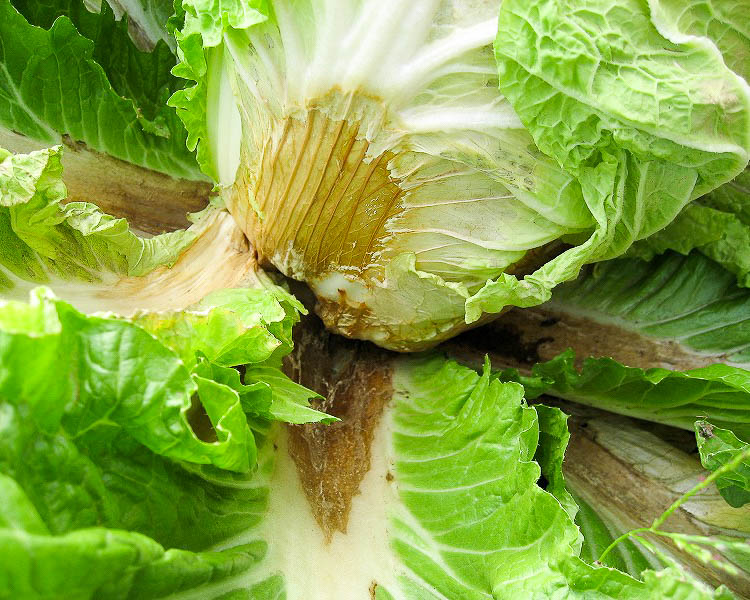
One of the most common diseases to which Chinese cabbage is susceptible during the growing season and storage. The causative agents of wet rot live on plant debris and in water bodies. The pathogen is carried by rain and pests and penetrates the plant through microdamages. It spreads widely at temperatures +25...+30°C and humidity above 90%, in particular with heavy dew.
The first signs of the disease appear at the stage of cabbage formation. Spots with an unpleasant putrid odor form on the outer leaves. The infection quickly spreads throughout the plant, and the cabbage rots. Diseased leaves fall off the central stem, which gradually softens and the plant dies.
Mucous bacteriosis begins with the core, which changes color from white-green to gray, then brown. The stump loses its strength and breaks. The head of cabbage falls and rots.
Important! The disease often manifests itself during the storage period of already cut Chinese cabbage if the temperature conditions in the storage are not observed.
In the initial stages, mucous bacteriosis is quite treatable. To combat it, treatments with various biological products are used in the places where the stalk is attached to the lower leaves. In storage facilities, when wet rot is detected, the temperature is reduced to 0...+1°C.
Vascular bacteriosis
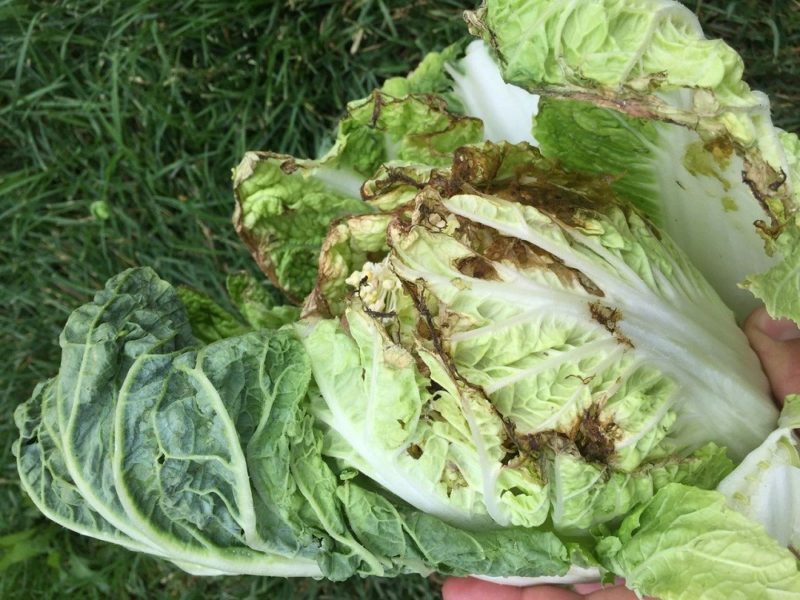
A bacterial disease that appears at any stage of plant development. The causative agent is microorganisms that penetrate the seeds and overwinter on the remains of cruciferous crops. Hot days with cool nights are favorable factors for the development of the pathogen. Bacteria penetrate cabbage through leaf stomata, microdamages, and are spread by insects, rain, and wind.
The disease manifests itself as yellowing of the edges of the leaves and blackening of the veins. The heads of cabbage are stunted, become loose and smaller.
Prevention of vascular bacteriosis includes treating planting material, removing plant debris from the garden bed, maintaining crop rotation, weeding, and exterminating pests. At the initial stage of infection, spraying with antibacterial drugs “Planriz” and “Agromag F” is carried out.
Downy mildew
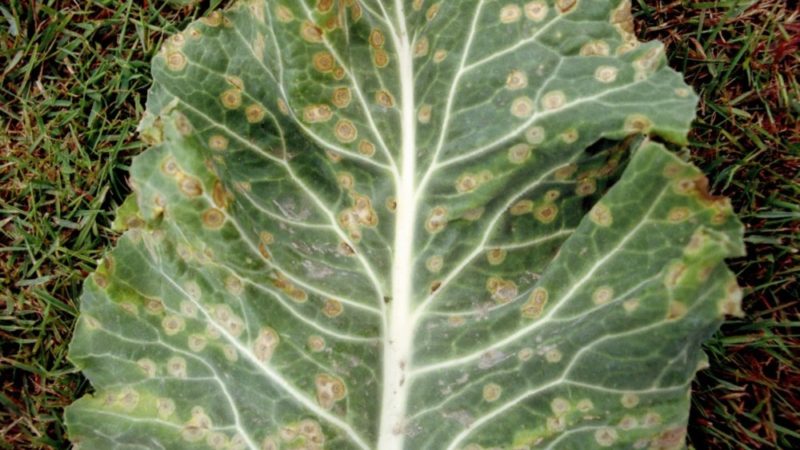
The pathogen primarily affects seedlings and is less common on adult plants. Pathogens are spread by wind and water in relatively cool and damp weather conditions. With warming up to +25°C, development peronosporosis slows down.
The disease makes itself felt by the appearance of vague gray spots with a fluffy coating on the leaves. The seedlings turn yellow and die. In adult plants, the head dies.
You need to start fighting the disease before sowing the seeds. They are disinfected with a solution of potassium permanganate, washed with water and dried. When alarming symptoms appear, seedlings are treated with copper-containing preparations or the undersides of the leaves are pollinated with ground sulfur or wood ash.
When peronosporosis is detected on adult plants, biological products are used for treatment. They spray cabbage.
Blackleg
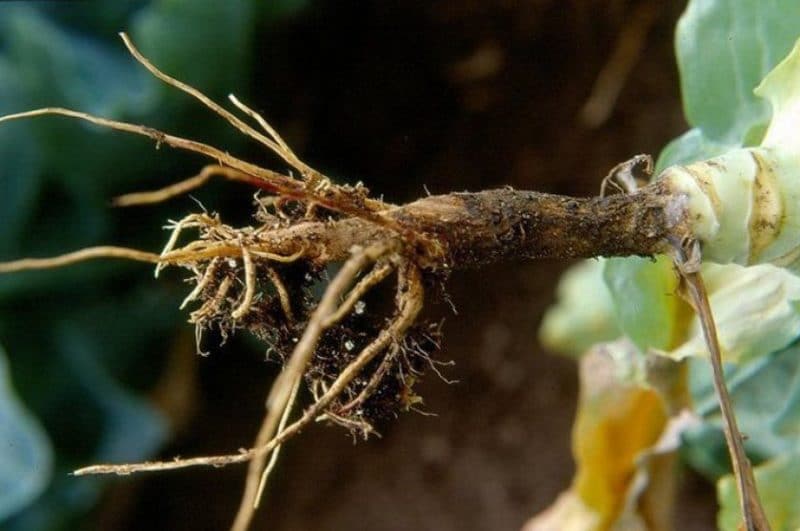
This is a typical disease of Chinese cabbage seedlings, manifested by rotting or darkening of the lower part of the stem. It develops in conditions of excess soil moisture and leads to the death of young plants.
For prevention, proper care of Chinese cabbage seedlings is important: compliance with sowing rules and temperature conditions, regular ventilation of the room and moderate watering.
Affected specimens should be removed immediately, surviving seedlings should be treated with a pink solution of potassium permanganate and the seedlings should not be watered for a week. To increase the effectiveness of preventive measures, ready-made medications are also used, sold in specialized stores.
Kila
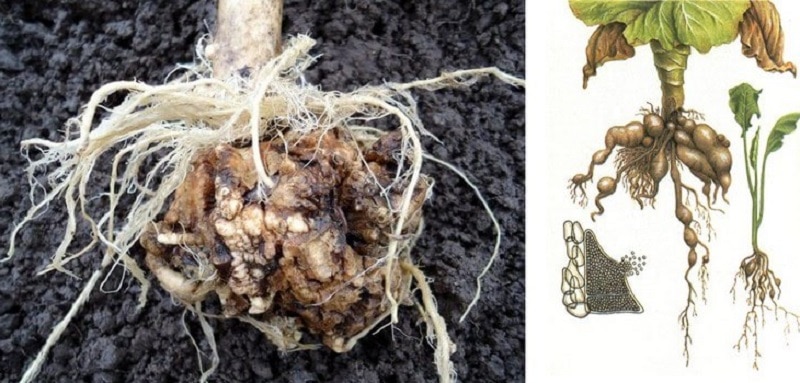
The causative agent of the disease is a fungus that lives in the ground for up to 15 years. It parasitizes the roots of plants, forming growths and swellings. Cabbage is most often infected at the seedling stage. As a result, middle and late varieties do not set heads, while early varieties form loose, small heads of cabbage.
Main symptom keels – the lower leaves wither in the heat, despite regular watering.
Pathogens are transmitted by water, soil insects, and earthworms.When the air temperature is below +18°C, soil humidity is less than 50% or more than 98%, the disease stops progressing.
Important! Clubroot does not develop in alkaline and neutral soils.
The main control and prevention measure is liming the soil. Sick plants are pulled out, and the growing areas are sprinkled with bleach. Chemicals are not used to treat clubroot.
Gray mold
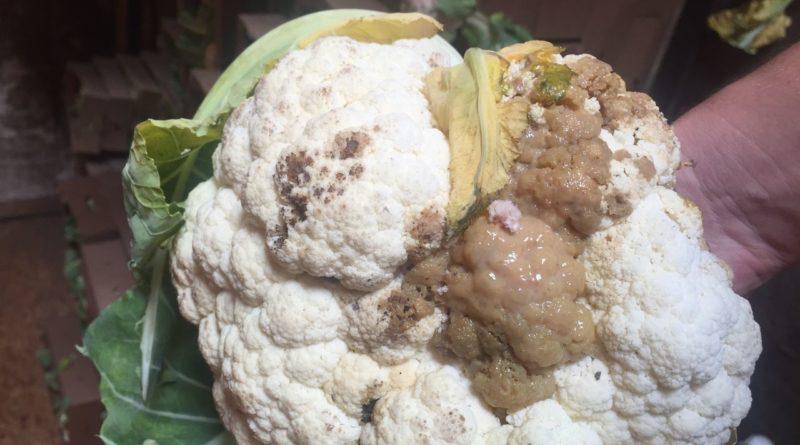
A disease of fungal origin. It affects the heads of Chinese cabbage that have suffered from mechanical stress and manifests itself as a grayish fluffy coating on the upper leaves. The impetus for exacerbation is increased air humidity
As the disease progresses, an unpleasant odor appears and the leaves become slimy. The mold penetrates the inside of the head and the crop dies.
To avoid damage from gray mold, it is necessary to disinfect storage facilities before storing vegetables and observe optimal storage conditions.
Pest control methods for Chinese cabbage
Small ones love to eat the juicy leaves of Chinese cabbage. insect pests. It is difficult to fight them, especially when the crop has already been attacked. It is better to prevent an attack by taking the necessary measures in advance.
Caterpillars
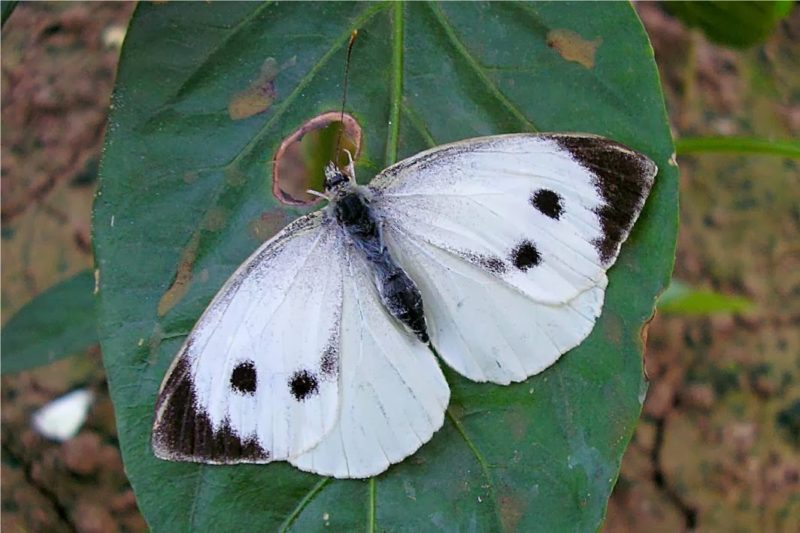
The cabbage white butterfly, a white butterfly with dark spots on its wings, feeds on nectar and does not pose a threat to Chinese cabbage. Its offspring are the most dangerous for plants: green-yellow caterpillars up to 4 cm long gnaw at delicate leaves, leaving rough veins. Light yellow egg clutches in a pile are easy to spot when examining the lower parts of the cabbage. Stage caterpillars takes from 10 to 40 days depending on the time of year.
To prevent attacks by cabbage whites, seedlings are sprayed with a solution of laundry soap or wood ash. In case of multiple lesions, chemical agents are used.
Cabbage flies painted gray, with 3 longitudinal stripes on the back. The body length of the male does not exceed 5 mm, of the female – 6 mm. Insects lay eggs directly on cabbage. Hatched white worms up to 8 mm long eat roots, stems, and heads of cabbage from the inside.
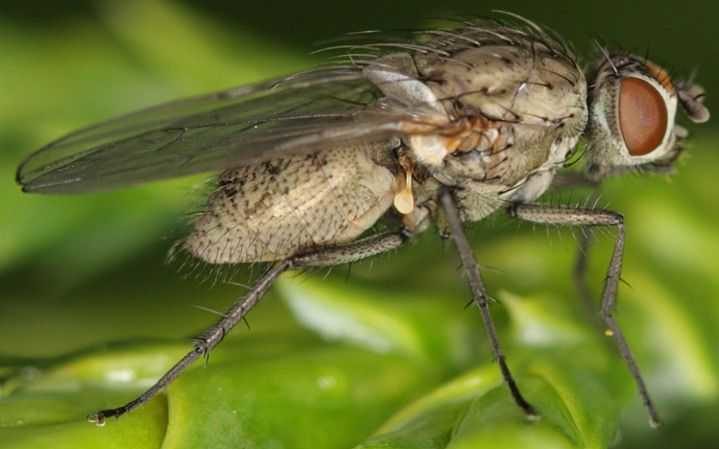
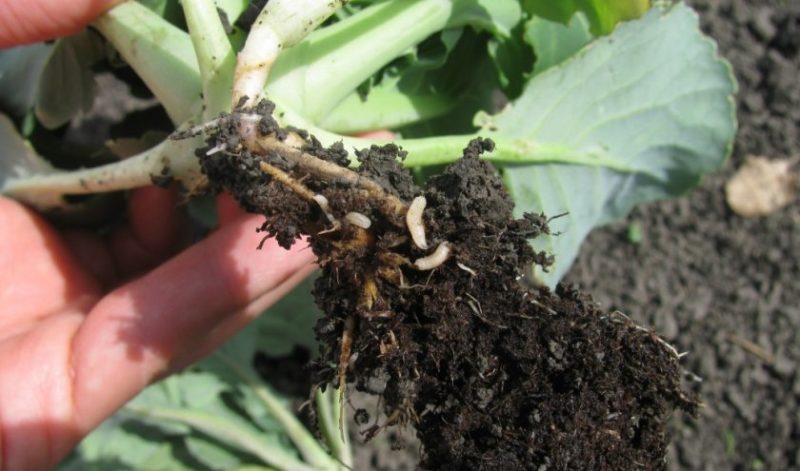
Reference. There are 2 types of cabbage flies: summer and spring. They are similar, have slight external differences and different periods of awakening after winter (June and April, respectively).
The fight against cabbage fly comes down to scattering granules of chemicals on the soil.
Scoop - a nocturnal butterfly that overwinters in the soil, the females of which lay eggs on the inside of cabbage leaves. Caterpillars feed on succulent shoots, gnawing huge holes in them.
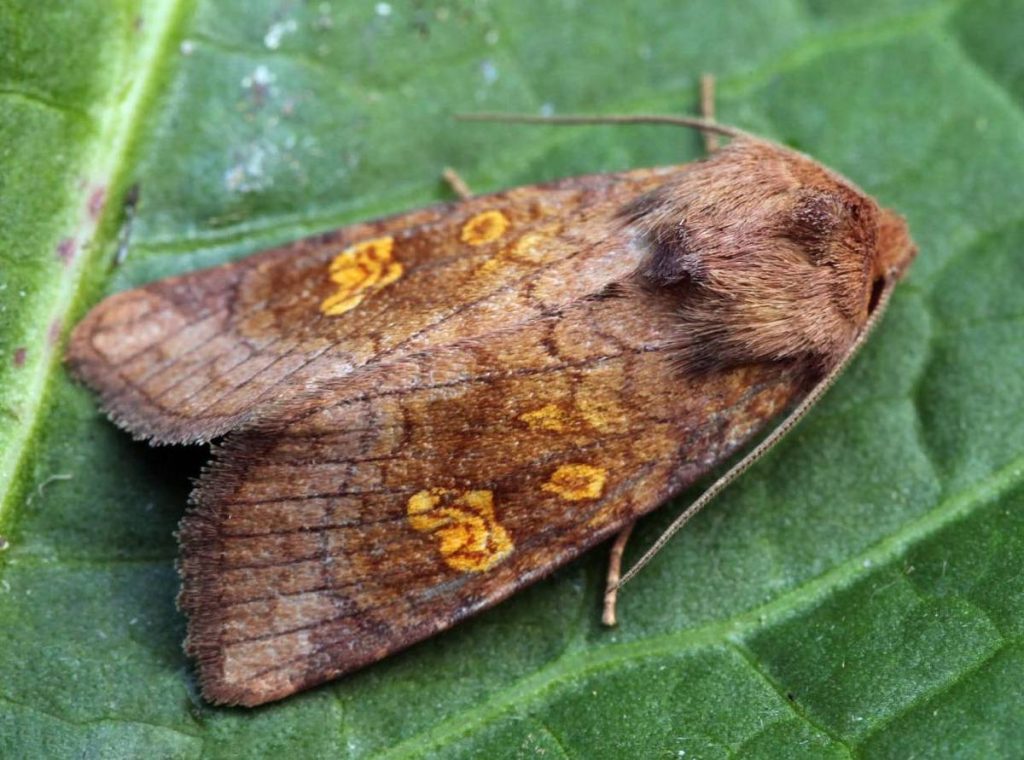
To combat the pest, dill is planted next to the cabbage bed, in the umbrellas of which insects that feed on the larvae live. The seedlings are sprayed with various preparations to get rid of pests.
Slugs
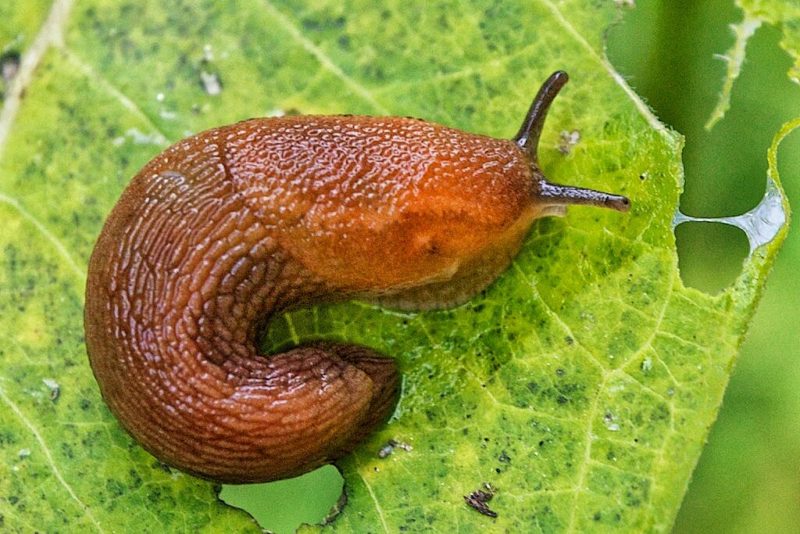
Some of the dangerous pests that become active in cloudy and damp weather are: slugs. Very voracious, they are capable of damaging the entire Chinese cabbage crop in a short time due to the presence of a gnawing mouthpart with a large number of bristle teeth.
During the day, slugs hide in damp, cool places (under leaves, stones), and they are not easy to detect.
To repel shellfish, a mixture of wood ash, red pepper, dry mustard and salt is scattered around the plantings.. As an alternative, boards or burdock leaves are placed between the rows, under which slugs like to hide in the heat - they will be easy to collect and destroy. Effective pest control is only possible with the help of chemistry.
Cruciferous flea beetle
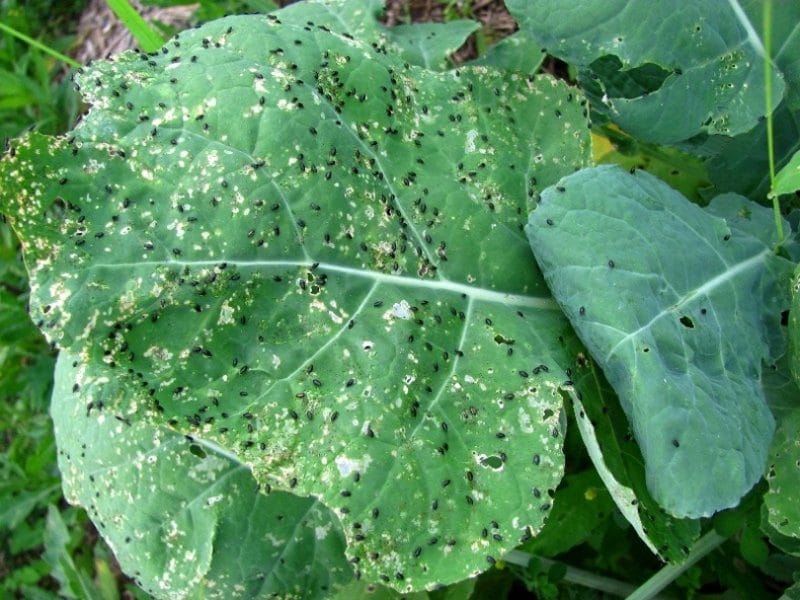
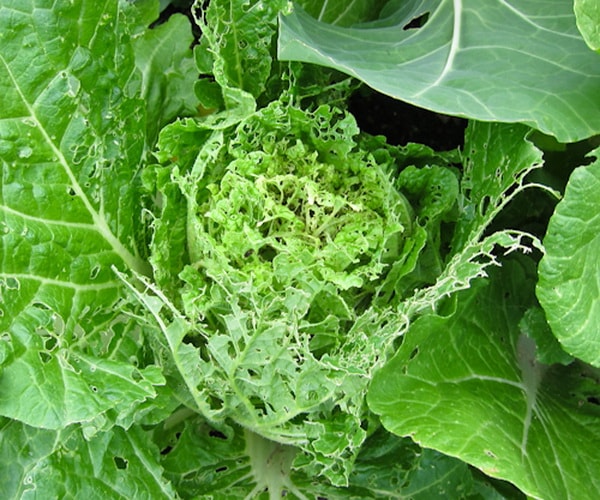
A small insect up to 3 mm long, living in the upper layers of soil and plant debris, feeds on cabbage leaves, preferring young, tender seedlings. The cruciferous flea beetle gnaws holes in the greenery, and the plant dries out.
To protect against pests, Chinese cabbage is planted near garlic, tomatoes, and onions. You cannot plant vegetables in beds where cruciferous crops previously grew. A mandatory activity is weeding.
If fleas are found, sprinkle the cabbage with tobacco dust or wood ash. If this does not help, it is necessary to use chemicals, spraying with which is allowed at least 30 days before harvest.
Aphid
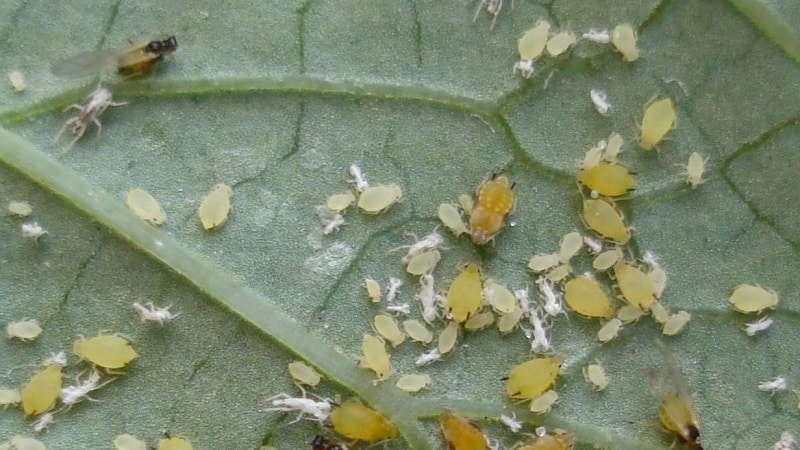
The body of a light green insect up to 2 mm long is covered with a waxy coating. Winged aphid reproduces with enormous speed: lays eggs on the inside of leaves, from which larvae hatch and feed on cabbage juice. Infected plants gradually wither, the heads begin to deform and rot.
Prevention of the appearance of aphids should be started at the harvesting stage so that they do not attack Chinese cabbage plantings next season. Plant residues are removed and the soil is cultivated. To attract insects that feed on aphids, carrots and dill are sown near cabbage beds.
When large colonies of aphids are detected, they resort to insecticides.
Conclusion
The fight against enemies and diseases of Chinese cabbage is one of the main stages of care for those who want to get a high-quality harvest. It is important for vegetable growers to learn not only to recognize pests, but also to carry out preventive treatments in a timely manner at the first signs of an attack and the appearance of alarming symptoms indicating the development of diseases.